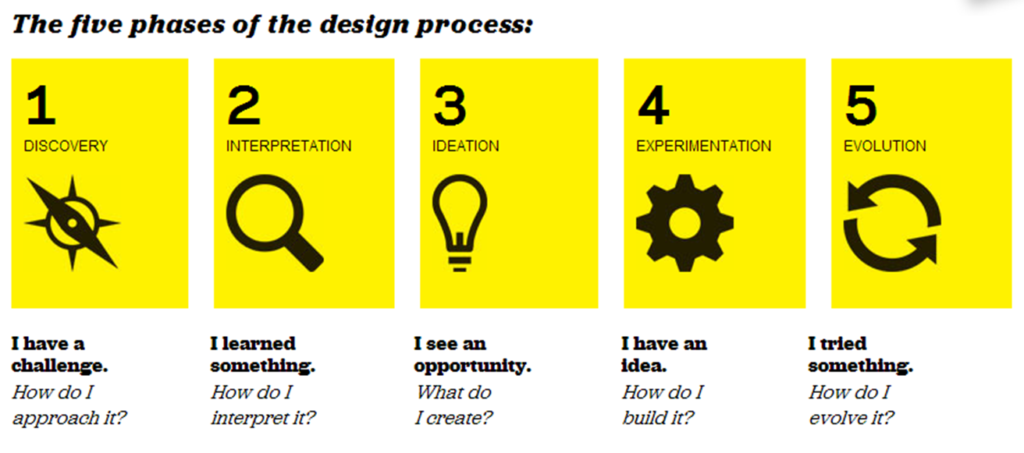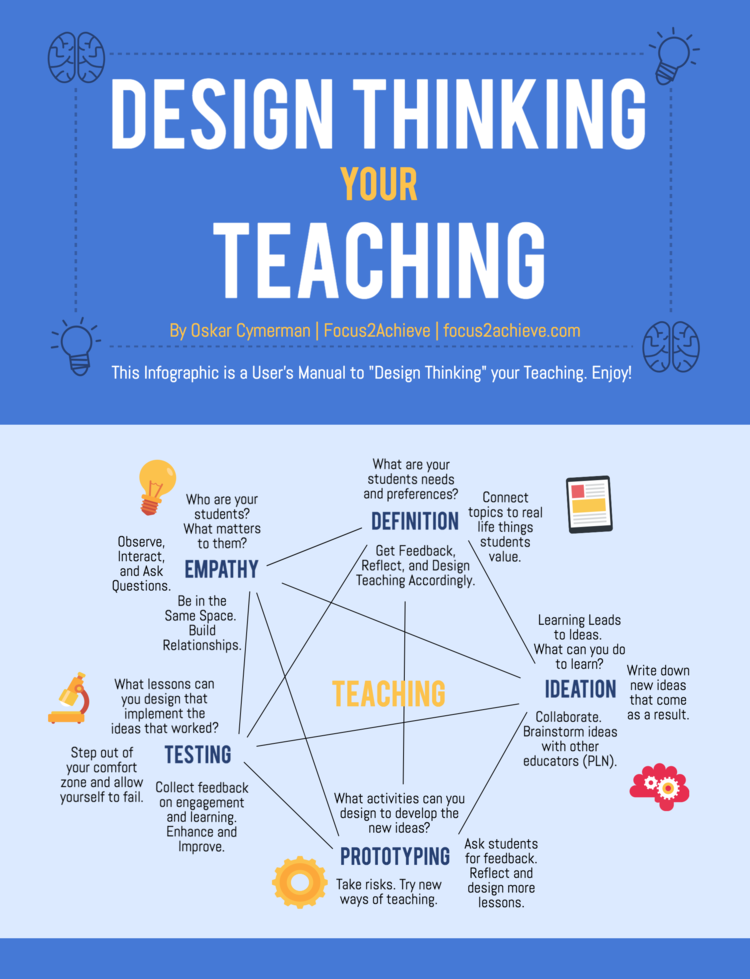Table Of Content

These examples of design thinking show just how impactful this methodology can be when solving problems. It wasn’t until Gebbia began moving through the app like a user that he realized why no one was wanting to book a stay—the pictures looked terrible! Without any data to back their next decision, Graham and Gebbia decided to rent a camera, travel to New York, and spend some time with their customers to replace the amateur photos with more professional-looking ones. Using the design thinking process to find better ways to serve a community can have profound effects on the lives of its members. Take Danish design agency Hatch and Bloom’s creation of The Good Kitchen as an example. The mission of the MIT Sloan School of Management is to develop principled, innovative leaders who improve the world and to generate ideas that advance management practice.
Phase 5: Test
To test the app, 11 Moonrisers, six employers, and a team of designers and programmers were assembled for a one week period to work out the kinks in the platform. Your goal in this phase is to find the best solution to the problem by prototyping—that is, producing scaled down versions of the product or its features found in the previous phase. You’ll put each solution to the test by improving, redesigning, accepting, or rejecting it. Here you state your users’ needs by compiling the information you gathered during the Empathise phase and then analysing it until you can define the core problem your team has identified. It’s an actionable technique that allows us to tackle “wicked problems,” or problems that are ill-defined.
key takeaways to implement design thinking into your workflow
Emphasizing the importance of psychological safety, it reveals how design-led companies have significantly outperformed market averages by prioritizing inclusive and dynamic brainstorming sessions. Learn effective techniques like encouraging diverse participation, deferring judgment, and setting clear roles to enhance ideation. Additionally, discover tools and strategies to overcome common challenges like groupthink and dominant voices, ensuring every brainstorming session is a fertile ground for groundbreaking ideas and solutions. Throughout the Design Thinking process, teams often cycle back and forth between stages, iterating on ideas, gathering additional insights, and refining solutions based on feedback from users and stakeholders. This iterative approach enables designers to continuously improve and innovate, ultimately leading to more effective, user-centered solutions. Knowledge acquired in the latter stages of the process can inform repeats of earlier stages.
Stage 2 in the Design Thinking Process: Define the Problem and Interpret the Results
It’s worth emphasizing that design thinking holds greater importance than ever before. It equips individuals and organizations with the tools to navigate change effectively, foster innovation, and create solutions that prioritize the needs of users, transcending disciplinary boundaries. In these stages, design thinking transforms from a theoretical concept into a hands-on, user-driven methodology that fosters innovation and creative problem-solving.
Design Thinking Core Principles
As I’ve shared my knowledge of design thinking with others, I’ve frequently been asked how often it delivers demonstrable results and how broadly it can be applied. Below is my collection of design thinking success stories that have helped reinforce my conviction that design thinking can deliver incredibly powerful results and be applicable to everyone. Reza Moussavian, a senior HR and IT executive at Deutsch Telekom explains the company's journey and how important Design Thinking is as a business strategy for HR.
The “Double Diamond” Design Process Model—Design Council
In the rush to embrace this transformative approach, there’s a danger of viewing it as a panacea for all organizational challenges. It’s not a one-size-fits-all solution, and not every problem requires a design thinking approach. Over-hyping can create unrealistic expectations, leading to disappointment when results fall short.
How does design thinking work for product teams?
Don’t worry about coming up with concrete solutions or how to implement each one — you’ll build on that later. The goal is to explore new and creative ideas rather than come up with an actual plan. That means that design thinking is not only for designers but also for creative employees, freelancers, and business leaders. Design Thinking is not exclusive to designers—all great innovators in literature, art, music, science, engineering and business have practiced it. The design team will now produce a number of inexpensive, scaled down versions of the product (or specific features found within the product) to investigate the key solutions generated in the ideation phase.
Get in touch with our experts to learn more about our services
It’s essential to strike a balance between recognizing design thinking’s potential and acknowledging its boundaries. It’s not just visual creative projects that can benefit from the design thinking process. Founder, speaker, and author David J. Bland used the methodology to plan out his book and collaborate with other team members in the process. In addition to helping him refine and adjust the structure, Bland also used it to gather feedback from early readers and target audiences, which helped get the final product just right.

There are multiple design thinking frameworks, each with a different number of steps and phase names. One of the most popular frameworks is the Stanford d.School 5-stage process. Design thinking is a problem-solving methodology that helps teams develop new ideas. This aspect is crucial in understanding the users’ needs, desires, and experiences to ensure that designs resonate on a deeper, more personal level. The team tests these prototypes with real users to evaluate if they solve the problem. The test might throw up new insights, based on which the team might refine the prototype or even go back to the Define stage to revisit the problem.
The unicorn startup’s design thinking approach involved curating a unique experience that appeals to the expectations and demands of the global audience, while also ensuring an authentic and safe homestay for renters. Documenting the details led to a better design of the care facility that would enhance the subject’s pleasure. Such a design thinking process example demonstrates how understanding your customer, or subject, in this case, can completely change the perception towards a problem. The second phase of design thinking is developing solutions to the problem (which you now fully understand).
At SG-GSC, customers were billed for the time each assigned employee worked. The process of collecting the time worked by those employees (HCC) was a complicated and difficult ordeal. These employees had to navigate different systems, many types of contracts, high staff mobility, and a variety of processes between business lines. First, the internal application of design thinking tactics within a group, organization or community, and second, the internal application of design thinking to one’s own self and life. Design thinking helped The Guardian newspaper and publishing group change their funding model, boost revenue and adapt their culture and engage on an emotional level with their readers. In this case study, Alex Breuer, Executive Creative Director and Tara Herman, Executive Editor, Design explain how design thinking was able to achieve these goals for The Guardian.
By delving into why children held the toothbrush with their palms instead of fingers, designers uncovered a gap between needs and market supply, paving the path to eventual success. Doug also organised a brainstorming session at a children's museum, wherein the children participated and contributed by sketching out their ideas. Many of these later served as valuable inspiration for refining designs and prototypes. Founded in 1994, GE Healthcare is headquartered in Chicago, Illinois, and operates in more than 100 countries. It was through design thinking that the brand revamped the typically scary experience that children face when undergoing a scan. When you understand the problem, the ideas will follow, and the way to a solution is more straightforward.
Tech Talks: Increase Your Competitive Edge through Design Thinking - Reach Further
Tech Talks: Increase Your Competitive Edge through Design Thinking.
Posted: Wed, 07 Feb 2018 08:00:00 GMT [source]
It gained prominence in the corporate world thanks to influential figures like David Kelley of IDEO and the Stanford d.school, which helped popularize and formalize the design thinking process we know today. Design thinking, a term that has surged in popularity, transcends the realm of aesthetics and reaches into the very core of how we tackle challenges, both big and small. It’s a methodology that isn’t confined to designers alone but is a powerful tool for anyone seeking novel solutions, whether in business, education, healthcare, or even personal life. Design thinking isn’t just a buzzword – it’s a dynamic and transformative approach that promises to reshape how we approach problems and create solutions. The earlier stages of the process — Empathize, Define, and Ideate — are perfect for bringing in people from across the business. In fact, bringing in varied viewpoints and perspectives can help you come up with more creative or effective solutions.
Design thinking is also solution-based, looking for effective solutions to problems, not problem-based, which looks at the problem itself and tends to focus on limitations. The hospital has been using design thinking principles to design better hospital wards and emergency rooms. They kept the interest and specific needs of the patients in mind, which boosted patients’ well-being and psychology. It is another great example of how design thinking is spreading beyond the field of traditional business strategy.
This stage encourages divergent thinking, where teams focus on quantity and variety of ideas over immediate practicality. The goal is to explore as many possibilities as possible without constraints. The first step of the design thinking process, empathise, is dedicated to gaining profound insights into the needs, desires, and challenges of the end users. The main goal at this point is to observe and collect user data without letting any preconceived notions hinder the process.
Let’s now take a quick look at 10 popular frameworks to further understand this innovative and revolutionary process. If you’ve just started to embark on your journey into the field of design thinking, you may have noticed different frameworks cropping up here and there. This is nothing to worry about—it’s simply the result of different people’s perceptions of the design thinking process. To help you get your head around these interpretations, we’ve prepared a useful summary of the most popular design thinking frameworks used by global design firms and national design agencies. The team found out that the service redesign process required a better understanding of the decision points of both users and non-users.

No comments:
Post a Comment